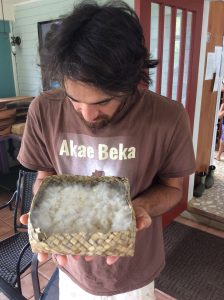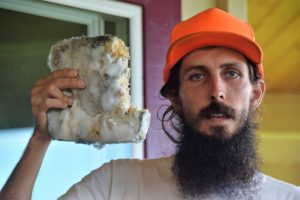- So i have some tomatoes that look like Imo on them as i was drying them out for next year. If so, can i innoculate some rice? Will they develop in a jar? I currently dont have pile of leaves to create an environment.
- Cancacantcanna asked 7 years ago
- You must login to post comments
Whitish mold will grow on all kinds of things. I have forgotten rice in a rice cooker for a week and come back to a nice bloom! Is this IMO, yes, it is indigenous micro organisms!
Is this the KNF Microbes we are looking for to enhance our soil? NO. These microbes will do little if anything to enhance our soil and will be a waste of time to grow up to immense populations using a bokashi method.
What we are looking for in Korean Natural Farming are beneficial soil microbes. To get these, we must put a box with freshly cooked rice (or other starch material such as potato, but rice has a plethora more reasons why it is used as a media) into the forest in a container that gives it 1/3 airspace to create a perfect microcosm for microbial growth.
When the soil below the box is disturbed as we sweep away the leaf litter and dig slightly into the dirt, this is like hurricane Katrina for the microbes. They are destroyed, but this nice new rice is like FEMA coming in (although as a libertarian I do not believe in this type of activity, I am merely, albeit poorly, illustrating the point) with disaster relief supplies, so all the poor microbes flock to the new rice box to get relief. This in turn captures us a fractal of the forest microbiome and some of the most well adapted and well adjusted to working with the indigenous soil types around.
The leaf litter is also placed back on top of the box while it is incubating to thus create a cocoon type environment that really gives these indigenous soil microbes the best ability to colonize the rice.
These are the microbes you are looking for!
A good collection will be a thick mass of microbes that hold the rice together in a tempe like fashion. The top may have white wisps that look like spider webs or even better white cotton ball looking growths. There should be a minimum of tie-dye looking microbes as these indicate anaerobic microbes, but use the 80/20 rule where 80% should be good, and consider that an excellent collection.
You can see a great collection in this short clip:
- drake answered 7 years ago
- You must login to post comments
Please login first to submit.

